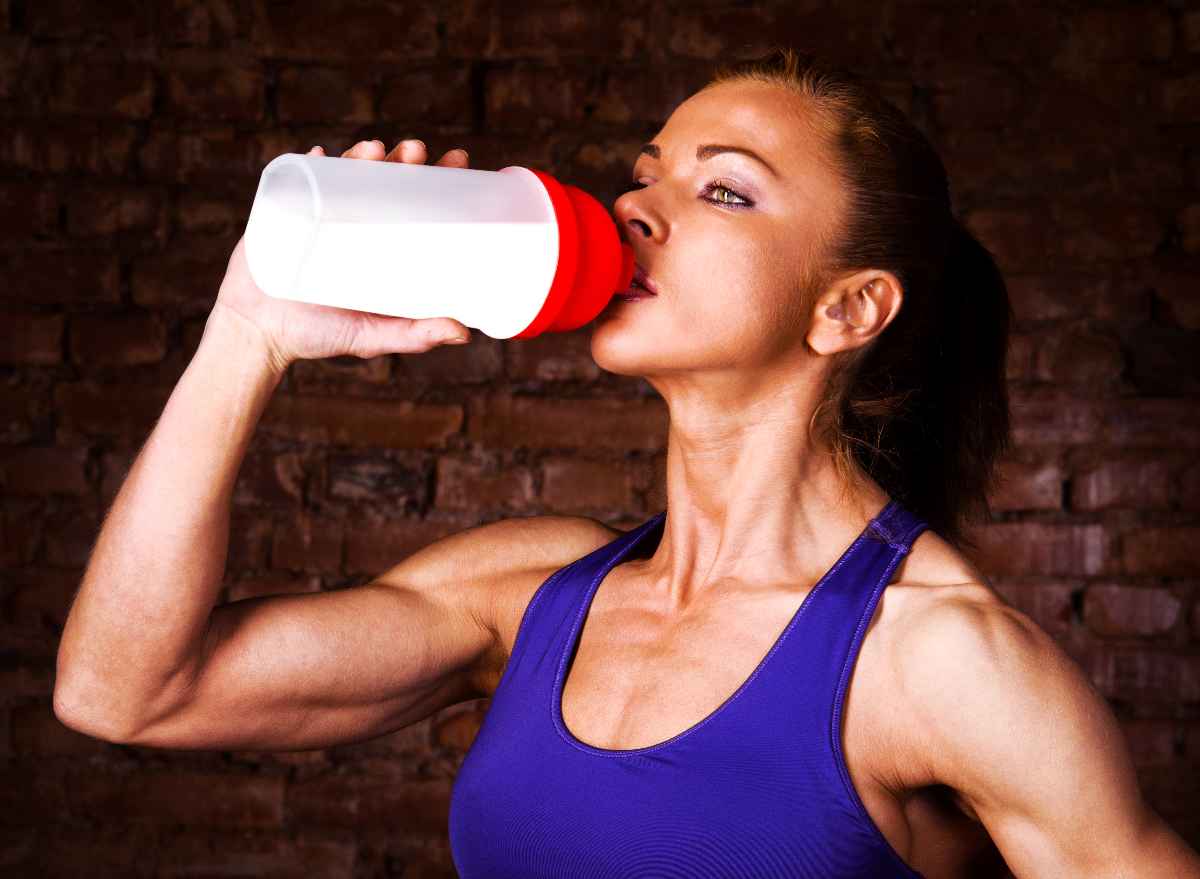How To Build Muscle Mass After Weight Loss, Fitness Expert Says

So, you've lost weight. Congratulations! You've poured blood, sweat, and tears into exercising, getting your nutrition on point, and progressing along your fitness journey to reach your health goals. But you may be wondering, "Now what?" After working so hard for so long, you've likely grown accustomed to having a fitness goal to work toward. And now that you've reached it, it's understandable to feel like you've lost your sense of direction. Fortunately, we're here to help guide you. The next step on your fitness journey should be to build muscle mass and boost your strength.
Why is this the best next step? Well, for several excellent reasons. Besides helping you feel more comfortable showing off your body at the beach, adding mass to your frame offers several health benefits. For example, strength training can enhance how your body processes food to help prevent diabetes and other chronic diseases, according to News in Health. Plus, maintaining strength can promote healthy aging by slowing down the decline of muscle mass, helping you live a longer, healthier life—research says so.
"Building muscle after weight loss is an excellent decision. After you've been in a calorie deficit, your body is naturally primed to gain weight," says Rachel MacPherson, CPT, an ACE-certified personal trainer with Garage Gym Reviews. "If you use this timing to focus on gaining muscle mass, you'll limit the amount of body fat you'll put on and add lean mass instead, which will help increase your metabolism after it has adjusted to becoming slower during weight loss."
If you're unsure where to start, we asked MacPherson to share some stellar tips for building muscle mass and strength after shedding pounds. Keep reading to find out how to build muscle mass after weight loss, and when you're finished, check out 5 Daily Exercises To Improve Muscular Endurance as You Age.
Increase your calories slowly.

You've likely heard that you need to "bulk up" to put on muscle, but that doesn't mean you should start eating everything in sight. This is where tracking calories using an online tool like Cronometer or MyFitnessPal can come in handy.
"Don't jump from your weight loss calories straight to eating without knowing how much you're consuming," advises MacPherson. "Instead, try adding some extra servings of protein and carbs each day. If you previously counted calories, try adding 100 to 200 calories per day for a week, then add 100 to 200 more. You should focus on slowly gaining between 0.5 to one pound per week."
Focus on hypertrophy-based weight lifting.
Hypertrophy training prioritizes building muscle mass as opposed to strength. Instead of powerlifting or lifting heavy weights in low rep ranges, focus more on moderate weights that you can perform in the 8 to 15-rep range.
MacPherson says, "To build muscle mass with hypertrophy training, do two lifting sessions per body part each week and slowly add volume as you progress. Stick to this routine for at least eight weeks (preferably 12 or more for best results)."
Get your fill of protein.

Consuming enough protein is critical for several bodily functions, including muscle growth, tissue repair, recovery, and a healthy immune system. While the current international recommended dietary allowance (RDA) for this muscle-building macronutrient is 0.8 grams per kilogram of body weight, you'll likely need a bit more if you're looking to add substantial muscle mass. So instead, aim to consume between 1.2 and 2.0 grams of protein per kilogram of body weight daily for optimal muscle growth, according to the American College of Sports Medicine. "Eating lots of protein during weight loss is very important, but if you weren't, then now's also a great time to ensure you're getting enough protein," suggests MacPherson.
Consume high-quality carbs after workouts.
According to the Academy of Nutrition and Dietetics, carbohydrates are your body's ideal fuel source for powering your workouts. Without them, your body won't have the energy to train hard and build muscle.
As for how much you need, MacPherson says, "After your workouts, ensure you get 25 to 40 grams of protein and 30 to 50 grams or more of easily digestible carbs. Of course, the amount will depend on your calorie needs, but consuming carbs with your post-workout protein shake will help your muscles use the amino acids and replenish your lost glycogen stores used to power your training session."
Cut back on cardio (for now).
It may sound counterintuitive for a fitness expert to recommend reducing your cardio—especially after you've relied on it for so long to lose weight—but overdoing it with your cardio sessions can prevent you from optimizing your muscle gains.
"If you've been doing lots of cardio during your weight loss efforts, now's the time to cut back," says MacPherson. "Consider cutting back to one or two sessions per week. You'll still get heart-healthy benefits from your weight training if it's challenging enough. Plus, cardio will get in the way of muscle recovery and doesn't promote muscle growth, so it should take a back seat to your weight-lifting sessions for now."








